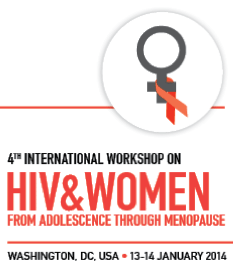Bone disease and older HIV positive women
1 February 2014. Related: Conference reports, Women's health, Intl Workshop on HIV and Women 4th 2014.

Polly Clayden, HIV i-Base
Bone disease and the associated risk of fracture are poorly understood in HIV positive people, particularly older HIV positive women. Savannah Cardew from the Women’s College Hospital, Canada, gave an excellent overview of what is known (and unknown) in this patient population at the 4th International Workshop on Women & HIV.
Dr Cardew began with some definitions – these are important as most of the research into bone disease and HIV has been done in young men. T-score is the number of standard deviations below the mean bone mineral density (BMD) for a healthy, young, sex-matched population. For post-menopausal women and men of 50 and over osteoporosis is diagnosed by T-score -2.5 or less or fragility fracture of the hip or spine. She noted that this definition should not be used for other populations.
For young people Z-score of -2.0 or less is below what is expected for their age group.
HIV positive people can have an increased risk for prevalence of traditional risk factors for low BMD including: low body mass index (BMI), glucocordicoids, comorbidities, hepatitis C and liver disease, smoking and early menopause.
Added to his HIV infection causes elevated levels of inflammatory cytokines and in turn bone loss. And antiretroviral treatment (ART) can increase contribute to loss of BMD – particularly tenofovir and efavirenz.
Studies of low BMD in HIV positive people have been inconclusive. One study in HIV positive people aged 20 to 30 years found no difference in BMD compared to HIV negative controls. A meta-analysis of longitudinal studies found that starting ART is associated with accelerated bone loss, lasting about a year, followed by bone stability or increase.
Most research into low BMD in HIV positive people has been done in young men, which can make it hard to interpret for women. Findings from studies vary with regard to HIV-specific risk factors: the effect of antiretrovirals, AIDS defining illnesses and CD4 nadir.
For older HIV positive women, a prospective cohort study of 92 positive and 95 HIV negative post menopausal Latina and African-American women found the women with HIV had lower BMD at the spine and total hip (adjusted), associated with elevated bone turnover markers. Dr Cardew noted that this difference – although significant – was slight and that the control group were patients at the clinic. There was no difference in BMD between HIV positive women receiving and not receiving ART.
In a subset (one site) of women followed longitudinally in this study, HIV positive status was associated with slightly more bone loss in lumbar spine at one year (adjusted). There was no difference at other sites.
There was an association between tenofovir and greater bone loss.
Dr Cardew remarked that these are the only studies that have investigated low BMD specifically in post- menopausal HIV positive women.
She then showed findings from studies looking at whether or not HIV positive people are at increased risk of fracture.
A population-based, retrospective case controlled study in HIV positive people (75% men) over the age of 40 conducted in Spain in 2007 to 2009, showed an age and sex adjusted hazard ratio (AHR) of 6.2 for all hip fractures and 2.7 for all major fractures: hip, clinical spine, pelvis, tibia, multiple rib, proximal humerus and wrist/forearm. Dr Cardew suggested that the latter value might be more meaningful than AHR as patients cannot be separated from confounders. This study was not controlled for ART use.
A Danish study of mostly men over 16 and population-based controls conducted between 1995 and 2010 showed an overall fracture incident rate of 1.3 per 1000 person years in people with HIV alone and 2.9 in HIV/HCV co-infected patients. HCV was known to correspond with injection drug and alcohol use in this cohort.
And a large retrospective case controlled study looking at hip, wrist and spine fractures conducted 1996 to 2008 showed an overall prevalence of 2.87 fractures per 100 HIV positive people and 1.77 per 100 controls – giving a 60% increase in HIV positive people.
There have not been studies in post-menopausal HIV positive women. A prospective case controlled study – 1728 HIV positive women, 66% receiving ART and 663 clinic-based controls – followed non-white women who were mostly premenopausal 2002 to 2008. In this study, the positive women were older (40 vs 36 years), more were post-menopausal and they had lower BMI (28.5 vs 30). But they were more likely to be taking hormone replacement therapy, calcium and/or vitamin D and less likely to smoke. In this study HIV was not associated with an increased risk of fracture in multivariate analysis but traditional risk factors were predictive.
Dr Cardew concluded that more research is needed in this population to define the scope of the problem and to develop treatment options and strategies.
Reference:
Cardew S. Osteoporosis in elderly HIV infected women. 4th International Workshop on HIV & Women. 13-14 January, 2014. Washington DC. Invited lecture.
http://regist2.virology-education.com/2014/4hivwomen/docs/22_Cardew.pdf

